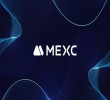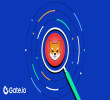7 November 2025
Is Web 3.0 the Internet's Future?
Web 3.0, sometimes referred as "Web3," is an unstructured collection of concepts regarding how the Internet of the tomorrow must appear as well as function. We're in a transitional period between the Web 2.0 and 3.0 eras, and the future of the web is far from determined. We will investigate the concept of Web3 and examine some concrete instances of technologies that fall into this category.
Also Read: How Cryptocurrency Is Used In Singapore?
Web 3.0 is now the newest iteration of the internet that uses AI, ML, as well as blockchain technology for genuine human interaction. The cherry on top is that with Web 3.0, users would be paid for their time online in addition to having control over their data. This is the Internet of the future, and we're glad you've arrived.
Also Read: How To Buy Metaverse Real Estate?
Let’s look at 10 examples or instances which proves that Web 3.0 will surely be the future of internet:
1. Blockchain Technology
In terms of a direct analogy, blockchain technology is as good as any since it is the technology that sparked the concept of Web 3.0. A blockchain is essential to the functioning of several other Web3 innovations. In this sense, the blockchain technology may be thought of as a distributed ledger. Distributed over the internet, the blockchain is made up of many individual computer systems. All databases should be in sync and updated whenever a new "block" of transactions is added to the chain.
2. Cryptocurrency
Cryptocurrency, commonly referred to as "Crypto," is a kind of digital money that operates independently of a central bank or government. Blockchains are used by Cryptocurrencies to keep track of how much money exists and who controls it. "Mining" offers processing power to operate the blockchain in return for new money, increasing the total quantity of Cryptocurrencies. It's how "traditional" Cryptos such as Bitcoin operate, at minimum.
3. Initial Coin Offerings (ICOs)
The "coins" being offered in an ICO are digital currency. Fresh coin creations, supposing they have some kind of remarkable breakthrough, need seed funding to get them off the ground. Investors in ICOs purchase your Cryptocurrency before it has any value in the hopes that, like Bitcoin and Ethereum, its value will rapidly increase, making them instant millionaires.
4. Non-Fungible Tokens (NFTs)
You've undoubtedly heard of this one already: NFTs are indeed a key component of Web3. Although NFTs have certain characteristics with Cryptographic currencies, they are not interchangeable with one another. The term "non-fungible" refers to this quality. To indicate ownership of digital or physical assets, NFTs are connected to those assets in the same manner that a paper title deed is.
5. Decentralized Apps (dApps)
To utilize a centralized application is to use a cloud-based service, such as Google Docs. You may be certain that Google has complete accessibility to, and control over, all of the data included inside your papers. For this sacrifice, we have access to a plethora of cloud-app benefits, such as data storage, simple collaboration, and much more. This is where dApps, or decentralized applications, play an important role. Many decentralized applications (dApps) do their online computing on the Ethereum blockchain, and so rely on Ethereum "gas" charges to fund their operations.
6. Smart Contracts
Obtaining a loan from a financial institution to finance the purchase of a motor vehicle in the modern day necessitates a sizable amount of documentation. A legal agreement between you and the bank outlining each party's responsibilities and rights is established. If payments are missed, the bank may take immediate action like taking back the automobile that is outlined in the contract.
7. Distributed Computing (Edge Computing)
Providing information and services online as near as feasible to the point of request or creation is the primary goal of edge computing. When compared to "Big Data" computing, which occurs in enormous centralized data centers, edge computing occurs at the very periphery of a network. Content could be consolidated at a centralized facility after being processed locally, for instance.
8. Decentralized Autonomous Organizations (DAOs)
A private company or nonprofit has a hierarchical management model. Executives as well as managers at all levels exercise command and control to coordinate the efforts of all those who have a hand in the necessary tasks. The hierarchical structure is rendered horizontal by a DAO. There are no top-level executives in place.
9. Machine Learning & Artificial Intelligence
Technology for machine learning and other major branches of AI have grown rapidly in recent years. Such innovations are what make apps such as Apple's Siri possible on our iPhones. With the use of Natural Language Processing (NLP), a smart agent can understand what you're saying to it.
10. The Metaverse
Another undefined idea that appears to overlap and integrate with Web3 ideas is the Metaverse. As a possible future user interface for the World Wide Web, the Metaverse is an intriguing concept. The utilization of Augmented Reality and Virtual Reality is crucial to the development of a consistent as well as cohesive customer expertise.
The Bottomline
Individuals will soon be able to decide how their information is used by businesses, and this will usher in a new era of Internet freedom and privacy or not. Blockchain technology will be used to facilitate this whole process. Because of this, web 3.0 will hasten the open and honest use of user data in areas ranging from tailored search results and cross-platform development tools to 3d animation. In the future, the internet will become increasingly dynamic as well as participatory. The next generation of the web is almost here! Let's jump wholeheartedly into Web 3.0.
Disclaimer: The author’s thoughts and comments are solely for educational reasons and informative purposes only. They do not represent financial, investment, or other advice.






